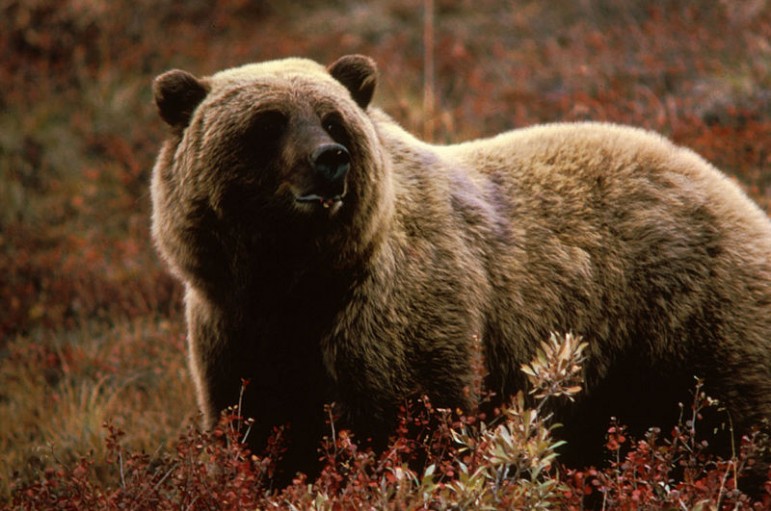
Grizzly bears in the greater Yellowstone area took a step closer to losing some protections as a threatened species after a group of researchers last week reported positive trends in the recovering population.
Wildlife managers from state, federal and tribal agencies met in Bozeman, Mont. to report on bear-human conflicts and hear details of continuing recovery efforts from the Interagency Grizzly Bear Study Team.
Managers had been concerned that weak production of cones from whitebark pine trees would mean more conflicts as grizzlies sought other food sources.
Instead, they heard “reports of surprisingly few conflicts between humans and grizzly bears, even though a record count of 58 unduplicated females with cubs were observed in the ecosystem this year,” according to a statement released by the IGBST.
Researchers count females with cubs as a way of statistically extrapolating a total number of bears in the area. Their 2013 population estimate stands at 629 grizzlies.
Bear managers worked to gather better data on the role of whitebark pine seeds in bears’ diets after a series of federal court rulings that have returned and kept grizzlies on the endangered species list despite a move in 2007 by the U.S. Fish and Wildlife Service to delist them.
Frank van Manen, who heads the study team, said the latest research “has shown us that grizzly bears are resilient and resourceful in the face of changing food resources.”
“Our findings indicate that the decline in (whitebark pine) due mostly to mountain pine beetles is not a major threat to the future of the Yellowstone grizzly bear population,” he said. “Data show the observed slowing of population growth since 2002 is a result of increased grizzly bear population density and resulting declines in subadult survival.”
A final version of the whitebark pine study is due later this year, but regional bear managers voted based on preliminary data to recommend that grizzlies again be delisted.
The U.S. Fish and Wildlife Service is expected to make a decision on the issue this winter.
“If delisting were to occur, it wouldn’t be until later in 2014,” said IGBST recovery coordinator Chris Servheen.
Members of some environmental groups have questioned whether there are sufficient numbers of grizzlies to justify removing their protected status. Bear advocates have also pushed for habitat improvements, including migration corridors that would make it easier for bears to move between regions.
“Our team will continue to monitor how grizzly bears respond over time and keep a close eye on the thresholds established to ensure a sustainable population,” van Manen said.

I lived in Jackson Hole 45 summers.
6 here in Cody. Before that 14 in Yellowstone.
Always interested in what is happening with bears.
I well remember going to the West Yellowstone dump to view Grizzlies.
The last Grizzlies I saw were close to Dragons Mouth. NOV. 3RD. Prior to that three big boars checking out a carcus by the Lake Butte Point Road.Sept. 29th.
In 2008 I saw 399 on Mothers day with her triplets 3 year olds close to Signal Mt. I understand she kicked them out shortly after that. Carol Bittner